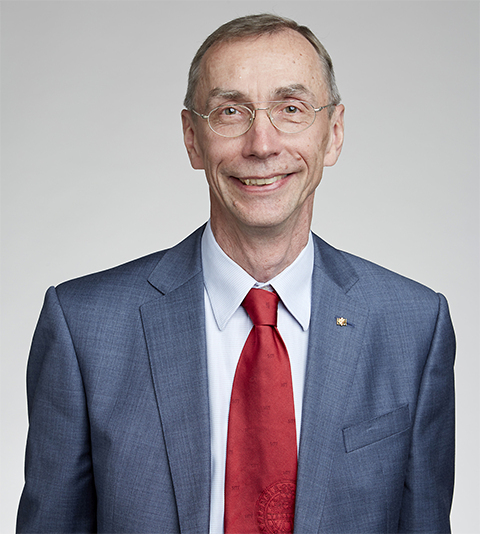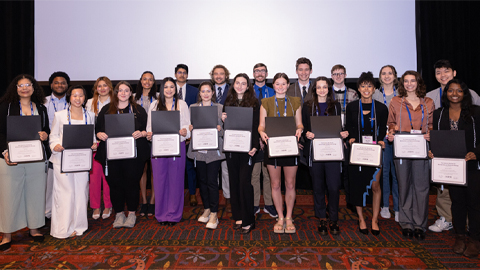Many of us are part Neanderthal. He found it out.
Swedish paleogeneticist Svante Pääbo this morning won the Nobel Prize in physiology or medicine for “discoveries concerning the genomes of extinct hominids and human evolution.” The Nobel committee specifically praised Pääbo’s work developing chemical and bioinformatic methods to extract and analyze ancient DNA.
The findings enabled researchers, including Pääbo and many others in the burgeoning field of paleogenetics, to discover that modern human genomes contain traces of DNA from extinct hominid relatives who diverged from our ancestors hundreds of thousands of years ago — cousins such as the Neanderthal and Denisovan species.

“Until quite recently — maybe 1,400 generations ago — there were other forms of humans around, and they mixed with our ancestors and have contributed to us today,” Pääbo, who directs the Max Planck Institute for Evolutionary Anthropology, said in a telephone interview with a Nobel staffer.
Difficult chemical analysis
To find that humans and Neanderthals intermixed, it was first necessary to understand the Neanderthal genome. But analyzing genetic samples from the vanished species was challenging. “It was considered to be impossible to recover DNA from 40,000-year-old bones,” explained Nils-Göran Larsson, chair of the Nobel committee, during the press conference to announce the prize.
Over time, DNA breaks down from long sequences into many shorter fragments. As thousands of years pass, it accumulates chemical modifications, such as deamination of cytosine to uracil, which can alter sequencing results, making it difficult to identify genuine genetic changes. It also can be contaminated with what biochemist Ross Hardison, a professor at Pennsylvania State University and a member of the editorial board of the Journal of Biological Chemistry, called “a tidal wave of microbial sequences,” from ancient bacteria involved in decomposition or microbes that arrived on the scene later.
Modern human researchers can also leave traces of their own genomes. Hardison estimated that roughly 95% of the average ancient sequencing run captures unwanted material; paleogeneticists must sort through the remaining 5% to determine which of the changes they observe are chemical and which represent differences between the ancient and modern genomes.
Pääbo was among the first to use the then-novel polymerase chain reaction to amplify ancient DNA. His group went on to develop ways to extract DNA from fossilized samples and predict from other organic material, such as amino acids, whether intact DNA would be present. Little by little, they extracted DNA from older and older animal samples — and finally from animal samples roughly as old as Neanderthal remains, such as cave bears and mammoths.
In the early 2000s, Pääbo’s team extended this work to study Neanderthal mitochondrial DNA. Although the mitochondrial genome, with just 16,500 base pairs, is much smaller than the nuclear genome, which has 3 billion, mitochondria are present in many copies per cell, making their sequence much easier to recover.
Through scrupulous use of clean rooms and independent replication and reproduction of results across laboratories, Pääbo’s group avoided some of the errors that troubled the field, and it reconstructed a several-hundred-base pair section of the Neanderthal mitochondrial genome.
“(Pääbo) pioneered the field of paleogenetics and perfected the technology of isolating and sequencing ancient DNA despite the serious criticisms early on that what was being sequenced was contaminant of the investigators’ DNA,” molecular biologist Aziz Sancar, who received the Nobel in chemistry in 2015, wrote to ASBMB Today in an email.
Neanderthal ancestors
As high-throughput sequencing became available in the early 2000s, Pääbo and a consortium of about 50 geneticists began to use the technology to work faster, eventually producing a complete assembly of the Neanderthal mitochondrial genome. While that revealed a great deal — for example, enabling an estimate that humans’ and Neanderthals’ last shared ancestor existed about 650,000 years ago — they continued to push to sequence the much-longer nuclear genome.
In 2010 they managed it, publishing a draft of a complete Neanderthal genome. Surprisingly, genomic analyses showed that Neanderthals had interbred with the ancestors of modern humans long after the two species had diverged. Populations in Europe and Asia show significantly more mixing with Neanderthal populations than West African populations, indicating that gene flow had happened later than the last shared ancestor of Homo sapiens.
“It changed people’s view of human history,” said Montgomery Slatkin, an emeritus professor at the University of California, Berkeley, who was a consortium member involved in analyzing the ancient DNA sequences to determine whether human–hominid crosses were plausible. Not only did the data demonstrate that humans and Neanderthals interbred, he added, it showed that “they mixed every chance they got.”
Slatkin praised Pääbo’s rigor in paleogenomics research, both in the laboratory and in theoretical interpretations of results. Even though Pääbo was impatient to announce the first draft Neanderthal genome, Slatkin said, he waited for the population geneticists to check and re-check their interpretations. “He wouldn’t publish something that we weren’t sure of.”
Genome sequencing later showed that Denisovan hominids were a third species, genetically distinct from modern humans, and in fact more closely related to Neanderthals. These hominids, too, had contributed genes to modern human populations in some parts of the world.
The exact effects that these inherited genes have are still being studied. Michael Dannemann, a professor at the University of Tartu in Estonia, was a co-author on the first few high-coverage Neanderthal genome papers. He since has studied the functional effects of Neanderthal genetic remnants in humans who carry them, with particular interest in the effect of noncoding regulatory sequences.
In an email to ASBMB Today, Dannemann wrote that Neanderthal DNA “still significantly influences several biological systems, including immunity … skin and hair traits and also behavioral phenotypes, such as smoking, sleeping patterns or alcohol intake.”
In addition to better understanding modern humans, he added, these functional studies may help explain traits of the extinct hominids that aren’t preserved in the fossil record — for example, how Neanderthals’ immune systems may have worked.
Researchers also are fascinated by how specific genes or sequences that are not shared between ancient hominids and modern humans may have affected humans’ more complex cultures and whether they might explain why humans flourished while other hominids vanished.
A welcome prize
When the Nobel committee reached Pääbo by phone in Leipzig to tell him he’d won the prize, he was preparing to pick up his daughter from childcare. According to Thomas Perlmann, the secretary of the Nobel committee and a professor at the Karolinska Institutet, Pääbo was overwhelmed by the news and briefly speechless.
The prize, established in 1895 from a bequest by chemist Alfred Nobel, chooses its laureates through a highly secretive committee. The award includes 10 million Swedish kroner, or about $900,000 in U.S. dollars, and a trip to Stockholm for Nobel Week galas and an honorific lecture.
“It has been an immense privilege to work with Svante,” Janet Kelso, a group leader at the Max Planck Institute for Evolutionary Anthropology, wrote in an email to ASBMB Today. “He has been a generous and inspiring mentor and a good friend, and I have learned a tremendous amount from him about doing science in an open and collegial way.”
Enjoy reading ASBMB Today?
Become a member to receive the print edition monthly and the digital edition weekly.
Learn moreGet the latest from ASBMB Today
Enter your email address, and we’ll send you a weekly email with recent articles, interviews and more.
Latest in People
People highlights or most popular articles

ASBMB inducts new honor society members
Chi Omega Lambda, which recognizes exceptional juniors and seniors pursuing degrees in the molecular life sciences, has 31 inductees in 2024.

2024 voter guide
Learn about the candidates running for ASBMB Council, Nominating Committee, Publications Committee and treasurer.

Charles O. Rock (1949 – 2023)
Colleagues and trainees remember a world expert in membrane lipid homeostasis.

Honors for Clemons, Hatzios and Wiemer
Awards, honors, milestones and more. Find out what's happening in the lives of ASBMB members.

Touching the future from the bench
Scholar, scientist, teacher and mentor Odutayo Odunuga discusses the important roles of the institutional PI, his journey and his research.

In memoriam: Darwin Prockop
He held leadership positions at multiple institutions and was known for his contributions to adult stem cell biology and cellular biology.

